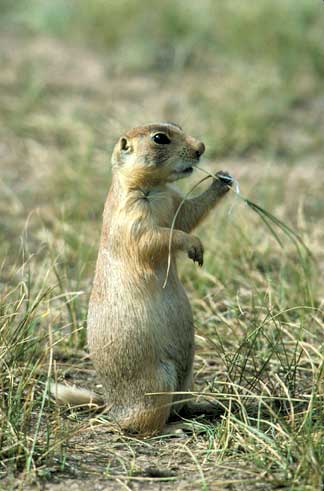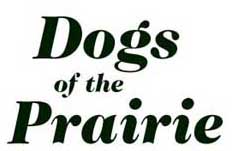Prairie dogs are ill-tempered rodents who trash the land they live on, carry bubonic plague and eat their young. But they’re kind of cute. Cute will get you a long way in life.
A few years back some folks in Lafayette, Colo., a town in eastern Boulder County, tried to do in the little dickenses—right out in the open, in front of the kids. An outcry ensued. The massacre set off a train of events that eventually prompted most cities and school districts in Boulder County to quit poisoning prairie dogs. Boulder County government set aside some 200 acres of its open space as a refuge for prairie dogs who have worn out their welcome on other parts of county open space. Boulder County owns about 60,000 acres of farm, ranch, and forest land purchased with an open-space tax. The preserve was exclusively for prairie dogs that were from these county lands.
Prairie dogs from private lands weren’t eligible for relocation. However, there was and is nothing in county regulations that prevents private property owners from doing them in.
Given the fact that most farmers and ranchers whose land is graced by prairie dog towns hold them in roughly the same esteem as bindweed, you might wonder why on earth anyone would want to relocate them.
Friends of the noble prairie dog offer three reasons: (1) Far from being a pesky varmint, the prairie dog is a “keystone” species, one on which a host of other species depend for sustenance; (2) Prairie dogs are a threatened species; and (3) People have no business killing cute critters, especially in front of the children.
There’s a good deal of truth to the proposition that the prairie dog is fast food for a lot of other critters, including the noble eagle when he can’t get sushi. Like the esteemed pig, the prairie dog is highly useful when he’s dead. But, alas, as is the case with a lot of other foodstuffs, American agriculture has produced an abundance of prairie dogs.
The threatened-species argument is based on the contention that the blacktailed prairie dog has lost 99 percent of its original habitat. That proposition may be sound ecology, but inasmuch as the population density in local prairie dog colonies on Boulder County land averages 30 to 60 critters per acre—meaning there will be 6,000 to 12,000 animals in our 200-acre refuge alone—it’s a proposition I have a hard time repeating with a straight face. The feds took a long look at the question of whether the blacktailed prairie dog merits designation as a threatened species. They recently concluded that it didn’t.
On the other hand, I tend to attach more weight to the “don’t kill cute critters in front of the kids” argument. Granted, shielding children from the realities of pest control may be as naïve as teaching them to believe in Santa Claus, but the instinct to do so is decent and humane. God knows there’s no shortage of examples of axe murderers who got their start being cruel to animals. If government can find a way to show a decent respect for wildlife and set a good example for children without bankrupting the public purse, I think it should go for it.
Ah, but the problem with prairie dogs is they don’t practice birth control. In the four years since the original flap, there has been a major increase in prairie dog populations in the county as cities, towns, and even private property owners shy away from poisoning. Boulder County’s preserve is full; there is no more room at the inn.
So the issue has flared anew. This time it was set off by a decision by the school board to poison the critters on its playgrounds. In other words, the squabble has come down to a battle between animal rights and child safety. I suspect at the end of the day child safety will win.
Actually, the prairie dog is a pretty good metaphor for the central problem facing Boulder County, which is growth. (Boulder County is part of the Greater Denver Co-Prosperity Sphere, and is feeling the pressure of its sprawl.)
Prairie dogs eat their young—about 40 percent of the pups are cannibalized according to one re?searsearcher—because the population of prairie dog towns regularly outstrips the available food supply in the town. That presents prairie dog moms the prospect of a long, dangerous commute to the edge of town for groceries while the kids are left home alone and unguarded. It’s easier to nip over to the neighbors’ burrow and eat their kids.
If you want to know why managing growth is important, study the prairie dog and consider its ways.
Paul Danish is a Democratic County Commissioner in Boulder, Colo., and a journalist still listed on the masthead of Soldier of Fortune magazine—as Gun Rights Editor. He believes in a no-nonsense approach to growth management.


